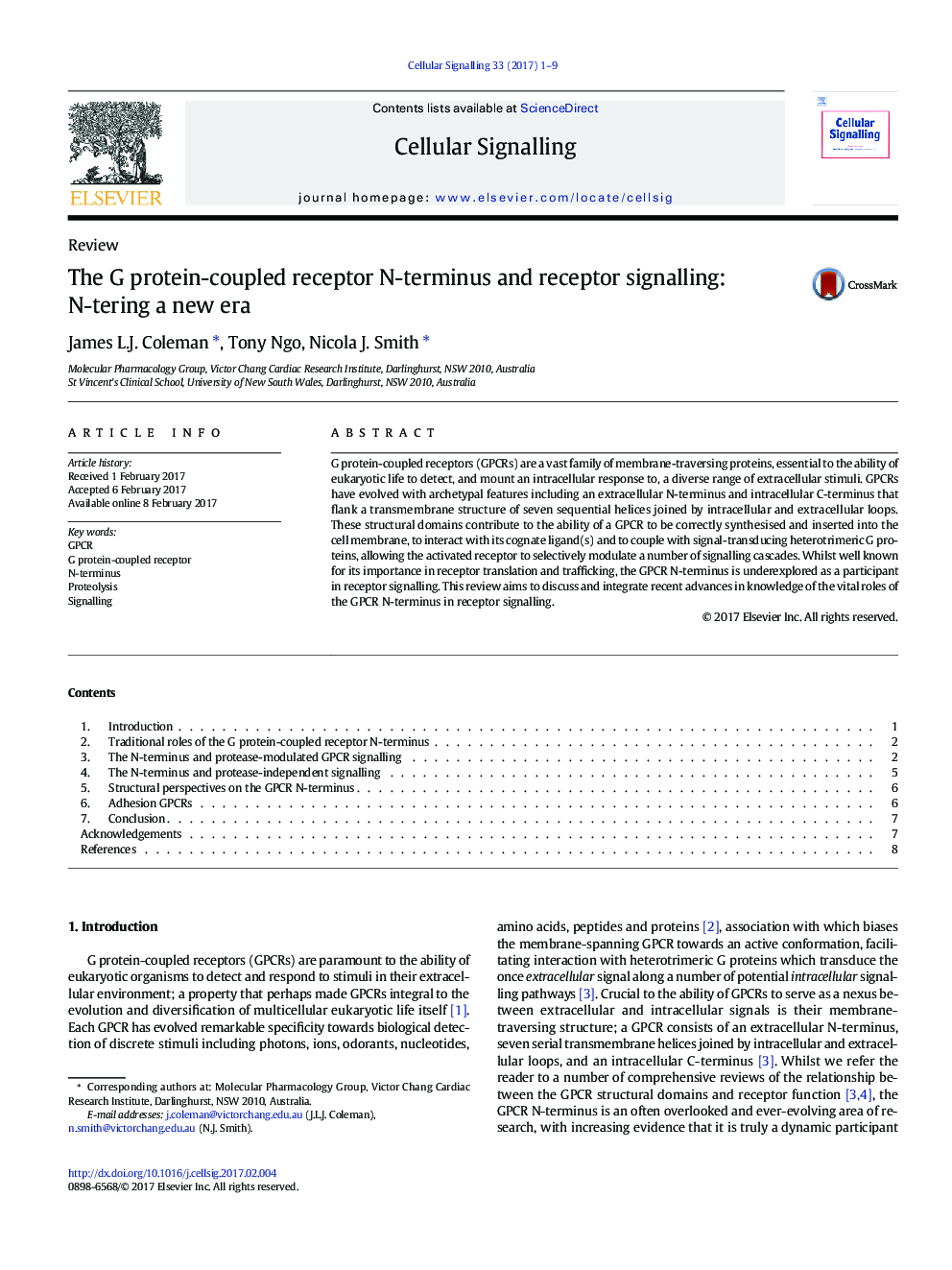| Article ID | Journal | Published Year | Pages | File Type |
|---|---|---|---|---|
| 5509338 | Cellular Signalling | 2017 | 9 Pages |
Abstract
G protein-coupled receptors (GPCRs) are a vast family of membrane-traversing proteins, essential to the ability of eukaryotic life to detect, and mount an intracellular response to, a diverse range of extracellular stimuli. GPCRs have evolved with archetypal features including an extracellular N-terminus and intracellular C-terminus that flank a transmembrane structure of seven sequential helices joined by intracellular and extracellular loops. These structural domains contribute to the ability of a GPCR to be correctly synthesised and inserted into the cell membrane, to interact with its cognate ligand(s) and to couple with signal-transducing heterotrimeric G proteins, allowing the activated receptor to selectively modulate a number of signalling cascades. Whilst well known for its importance in receptor translation and trafficking, the GPCR N-terminus is underexplored as a participant in receptor signalling. This review aims to discuss and integrate recent advances in knowledge of the vital roles of the GPCR N-terminus in receptor signalling.
Related Topics
Life Sciences
Biochemistry, Genetics and Molecular Biology
Biochemistry
Authors
James L.J. Coleman, Tony Ngo, Nicola J. Smith,
